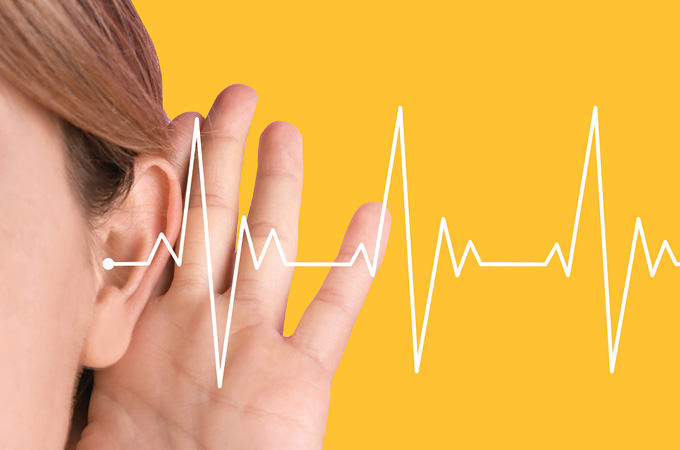For people with hearing impairments, daily communication presents an obvious set of challenges. When everyone is wearing a face mask and meetings are held via videoconference, these issues can become greatly magnified, both for students learning at home and adults working remotely. Here are some practical thoughts on overcoming these challenges from professionals who encounter them daily.
Brittany Wuebbles, a pediatric audiologist at Central Institute for the Deaf (CID), says that while face masks are necessary to prevent COVID-19 transmission, they can cause problems for people with hearing impairments. Masks reduce the volume and clarity of a person’s speech, interfere with the listener’s ability to capture nonverbal and emotional signals, and obscure visual cues from the movement of the speaker’s mouth. “People with hearing loss rely heavily on these cues to supplement auditory information, even when they are wearing well-fitting hearing aids,” she explains. “A mask also can reduce the overall volume of a person’s speech signal by 5 to 12 decibels.”
Wuebbles says that to offset these difficulties, hearing-impaired students and employees can use special hearing aid systems by manufacturers like Phonak. The company’s wireless Roger Focus system sends a teacher’s or presenter’s voice directly into the listener’s earpiece, improving clarity and eliminating outside noise. Face masks with clear panels in the middle also allow a speaker’s mouth movements to be seen more clearly.
Pat Wasserman, a CID counselor with profound hearing loss, says the pandemic has made communication more difficult for her, but it also has offered opportunities for greater understanding. “Challenges have been significant for me and other deaf and hard-of-hearing people,” she notes. “I have cochlear implants, but if I don’t have visual access to a speaker’s lips, I rarely am able to understand the person’s entire message just by listening. Even daily tasks that used to be mundane, like going to the bank or grocery store, can be extremely frustrating now.” She says feelings of added stress, anxiety and isolation tend to compound these difficulties.
However, Wasserman notes, there are practical answers to these challenges. Her colleagues have set up a videoconference platform with captioning to help her follow along in meetings, and at other times, sign language interpreters have been used. “I also overcome issues simply by being proactive in my daily interactions,” she says. “When I am in a difficult communication situation with someone, I use strategies like a talk-to-text smartphone app, typing a note on my phone or simply writing with pen and paper. I also explain patiently that I am deaf and unable to understand people with their masks on. Most have been kind and willing to work with me.”
Wasserman’s advice for other hearing-impaired individuals is straightforward. “Everyone deserves to be treated with kindness and respect,” she says. “If you are struggling to communicate, remember to stand up for yourself and ask for help. Lean on friends and family for support, take advantage of available technology, and always be patient with others.”








